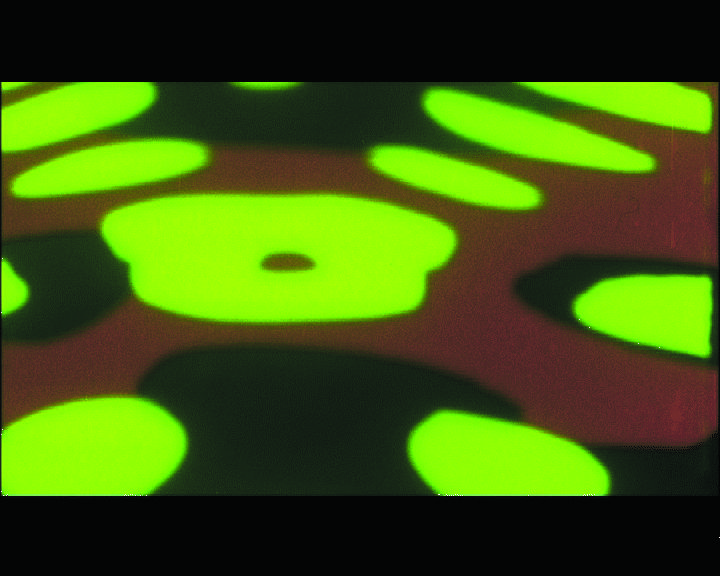Vanishing Points
In the beginning was the black ellipse. Nana Swiczinsky presents this form, which she also identifies as the geometric proto-cell, as the starting material for her film Points of View (1999). Adventurous distortions and contortions allow a maximum on form effects to appear. Black and white only was her original self-appointed limitation. Vanishing Points takes this proto-material and submerges it in a lush universe of color as though allowing every perspective a decisive expansion through the appropriate psychedelic lens.
The soberness of the basic element is thus countered by the abundant feast of color, rhythm, and form. Swiczinsky has subjected individual sequences of the predecessor film to a radical reworking. However, she does this without using a camera, but instead, by means of repetitive copying, masking, and dying. She approaches the proto-form from a wide range of distances and perspectives. The ellipse thus appears extensive one time, is divided in the middle at another point, and appears once as a grid surface, then again in cadres of diverse details: each transformation occurring in minute, fragile steps. The soundtrack, created from the sounds of a copy machine, offers a subtle change of rhythm. The coloring generates from the brashest primary tones, yet at the same time, their layering over one another results in white. This emphasizes the effect of a "bottomless depth," a hallucinogenic engrossment in the phenomenon of additive color mixing.
The vanishing points of the title correspond with the immersion in color and form: as geometric proto-elements, which in the course of their processing continually threaten to disappear, but also as pictorial anchors, sturdily affixed to the original material. In between: anamorphoses of that which is withdrawing, as it should.
(Christian Höller)
Translation: Lisa Rosenblatt
Vanishing Points
2005
Austria
8 min 30 sec

